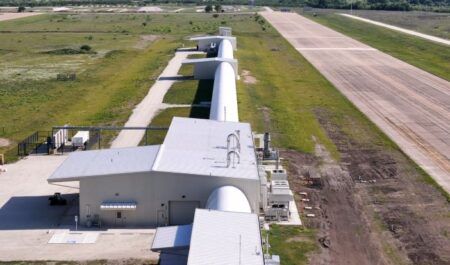Researchers from John Hopkins University have developed an AI that enables powerful modeling and physics simulations to be solved in seconds using desktop computers.
The DIMON (Diffeomorphic Mapping Operator Learning) AI has so far been used to model human hearts and predict the often-fatal condition of cardiac arrhythmia, reducing the time it takes to recommend treatments from a week to seconds.
The researchers have shown the same AI can be used to solve complex engineering problems, such as modeling how cars deform in a crash, how spacecraft respond to extreme environments, or how bridges resist stress.
According to the study, published in the journal in Nature Computational Science this month, DIMON can solve these problems thousands of times faster running on personal computers instead of supercomputers.
DIMON uses a generic approach to quickly predict solutions to partial differential equations, a process which up until now has been a time-consuming and computationally intense process.
Partial differential equations translate real-world systems or processes into mathematical representations of how objects or environments will change over time and space. They are present in nearly all scientific and engineering research.
For example, partial differential equations are used to create models of how fluids or electrical currents propagate through different geometries, like those involved in standard engineering testing.
Natalia Trayanova, professor of biomedical engineering and medicine at John Hopkins University and co-lead of the research said, “While the motivation to develop it came from our own work, this is a solution we think will have a massive impact on various fields of engineering because it’s very generic and scalable.
“It can work on any problem, in any domain of science or engineering, to solve partial differential equations on multiple geometries, like in crash testing, orthopaedics research, or other complex problems where shapes, forces, and materials change.”
In addition to demonstrating the applicability of DIMON in solving other engineering problems, Trayanova’s team tested the new AI on over 1,000 heart digital twins, detailed computer models of real patients’ hearts. The AI predicted how electrical signals propagated through each different heart shape, achieving high prognostic accuracy.
Trayanova’s team relies on solving partial differential equations to study cardiac arrhythmia, which is an electrical impulse misbehavior in the heart that causes irregular beating. With their heart digital twins, researchers can diagnose whether patients might develop the often-fatal condition and recommend ways to treat it.
“We are bringing novel technology into the clinic, but it takes us about a week from when we scan a patient’s heart and solve the partial differential equations to predict if the patient is at high risk for sudden cardiac death and what is the best treatment plan,” said Trayanova, who directs the Johns Hopkins Alliance for Cardiovascular Diagnostic and Treatment Innovation.
“With this new AI, the speed at which we can have a solution is unbelievable. The time to calculate the prediction of a heart digital twin is going to decrease from many hours to 30 seconds, and it will be done on a desktop computer rather than on a supercomputer, allowing us to make it part of the daily clinical workflow.”
How the DIMON AI works
Partial differential equations are generally solved by breaking complex shapes like aircraft wings or body organs into grids or meshes made of small elements. The problem is then solved on each simple piece and recombined. But if these shapes change – like in crashes or deformations – the grids must be updated and the solutions recalculated, which can be computationally slow and expensive.
DIMON solves that problem by using AI to understand how physical systems behave across different shapes, without needing to recalculate everything from scratch for each new shape. Instead of dividing shapes into grids and solving equations over and over, the AI predicts how factors such as heat, stress, or motion will behave based on patterns it has learned, making it much faster and more efficient in tasks like optimizing designs or modeling shape-specific scenarios.
The team is incorporating into the DIMON framework cardiac pathology that leads to arrhythmia. Because of its versatility, the technology can be applied to shape optimization and many other engineering tasks where solving partial differential equations on new shapes is repeatedly needed.
Minglang Yin, a Johns Hopkins Biomedical Engineering postdoctoral fellow who developed the platform said, “For each problem, DIMON first solves the partial differential equations on a single shape and then maps the solution to multiple new shapes. This shape-shifting ability highlights its tremendous versatility.
“We are very excited to put it to work on many problems as well as to provide it to the broader community to accelerate their engineering design solutions.”





